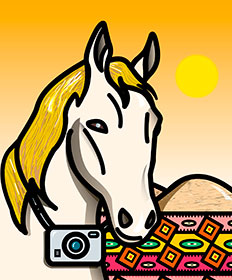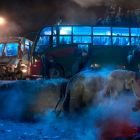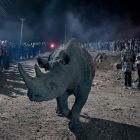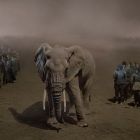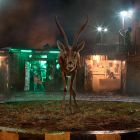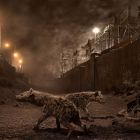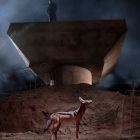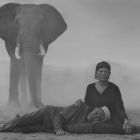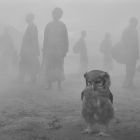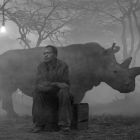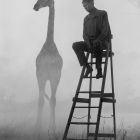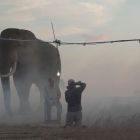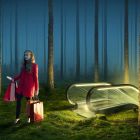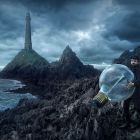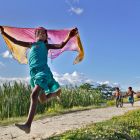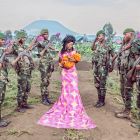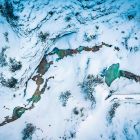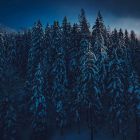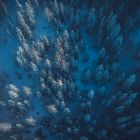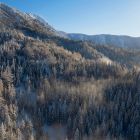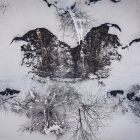CULTURE OF SOLIDARITY
THE EXHIBITIONS IN TULLN, CELJE AND BRATISLAVA
The exhibitions in Celje have been postponed to 2024, more info to follow.
Culture of Solidarity is the umbrella for those exhibition cooperations that the festival is showing outside of Baden – in Tulln, Celje and in Bratislava. While in Bratislava the winning photos of the Global Peace Photo Award as well as a kind of best-of retrospective of the festival will be presented as part of the Month of Fotografie, in Tulln the festival will show Gregor Schörg’s work on the wilderness area Dürrenstein-Lassingtal, and in Celje Erik Johannson’s picture series „Enigmatic Illusions“ and two picture cycles by Nick Brandt „This Empty World“ and „The Day May Break“ will be on display.
After his career as a director, Nick Brandt became one of the most important photographic artists in the world.
Before dedicating his life to the preservation of African wildlife, Brandt worked as a director. He shot video clips including Stranger in Moscow, Childhood and Earth Song by Michael Jackson. It was during the filming of Earth Song in Kenya that Brandt first came into contact with the wildlife he has been photographing for over fifteen years. He also owes his success as a photographer to his film skills. It was partly through the combination of these two approaches that he succeeded in revolutionising the visual language of animal photography in black and white.
His images in the series „This Empty World“, which could be described as surreal dystopias, show elephants, rhinos, lions and giraffes wandering aimlessly through the sceneries Brandt has constructed with his team. A body of work that resembles its creator: ambitious, committed and visionary. This series – Brandt’s first in colour – hauntingly presents a world overrun by galloping progress, where animals no longer have any room to survive.
His work „The Day May Break“ is the first part of a global series that portrays both humans and animals affected by ecocide – as Brandt calls the global climate collapse: „Ecocide that is the murder of our home, of planet Earth“.
„Erik Johansson creates what you imagine,“ says his website, which describes his qualities as an image editor and his photographic sense. His clients include global corporations such as Toyota, Google, Microsoft and Adobe, but also famous, even very famous artists. For example, one of his works can be found in Pink Floyd’s box set The Later Years.
„With my photos, the viewer should have to think for a few seconds to figure out what the trick is.“ The more you look at Erik Johansson’s pictures, the less you understand them. When he discovered photography at the age of fifteen, he already developed the technique that would determine his future career.
While for many photographic artists the creative process ends when the shutter button is pressed, for Johansson it is only then that everything begins. By combining several images that have nothing to do with each other, he creates surrealistic, even madcap sceneries, all of which express a strong environmental awareness.
„It’s about creating a puzzle of reality,“ Johansson explains. „To do that, you first ask yourself what creates illusion. Then you put the elements together and thereby create an alternative reality.“ Certain rules apply to this process, for example, the images must be similar in terms of perspective, light and contrast.
„I prefer to capture thoughts rather than moments,“ says the 36-year-old native Swede, who now lives in Prague and whose passion is art and drawing.
„The finished picture should be as difficult to understand as possible,“ Erik Johansson sums up. „The viewer should not be able to tell where the original begins.“ Like a perfect magic trick.
Inspired by the 1911 Austrian Nobel Peace Prize winners Alfred Fried and Tobias Asser, the Global Peace Photo Award recognises and encourages photographers from around the world whose images capture the human quest for a peaceful world and the search for beauty and good in our lives. The prize goes to those photographs that best express the idea that our future lies in peaceful coexistence.
Inner peace, peaceful coexistence, peace within a community, peace between nations, international peace policy – what do we associate with these terms? Since many important photography awards focus on the conflicts and crises, the wars and catastrophes on our planet, they usually do not shed light on what else people are capable of. The Global Peace Photo Award, which was launched in 2013 as the Alfred Fried Photography Award, fills this gap: It shows the different facets of peacefulness and completes the image of human beings with their good sides. It honours the pictures that tell of successes instead of failures, of empathy instead of hate, of what is worth preserving instead of destroying, of encouragement instead of torment and of the human right to beauty.
Gregor Schörg grew up, so to speak, with the camera in his hand at the side of his photographer father Christian Schörg. Four years ago, he caught drone fever, a passion that earned him 2nd place in the Federal Apprentice Competition for Young Photographers 2021. Reason enough for the festival to entrust Schörg Junior with the task of photographing something that is so worthy of protection that it should almost never be entered, the Dürrenstein-Lassingtal wilderness area. The ideal case for drone photography. It is „the endless perspective possibilities“ that fascinate Gregor Schörg and which he uses to create a two-part visual monument to the wilderness area: Winter in the Wilderness Area was the theme at the 2022 festival. Spring, summer and autumn will be shown in 2023.
The primeval forest Rothwald has existed for thousands of years. It observed the development of Lower Austria over periods of time that are hardly comprehensible to us humans. The wilderness area Dürrenstein-Lassingtal with its untouched natural spaces is an emotional primordial ground of our sense of home. It was particularly the golden age of iron processing with its intensive use of wood that contributed significantly to the economic upswing of Lower Austria. The primeval forest Rothwald shows us how our homeland has been shaped by time and nature.
The border area between Styria and Lower Austria has a varied history. The primeval forests of the whole of Central Europe were exploited so heavily over the centuries that by the end of the 19th century they had shrunk to around 400 hectares. Albert Rothschild bought the forest areas around Gaming and Göstling/Ybbs with the Rothwald in the middle in 1875. As a visionary nature romantic, he recognised the importance of this primeval forest remnant, which had remained untouched by humans since the last Ice Age. Against the spirit of the times, Albert Rothschild forbade his foresters to use this forest. In agreement with the Rothschild family, the protected area was gradually extended from 1988 onwards. In 1942 it was placed under protection, and in 2001 the wilderness area Dürrenstein-Lassingtal was established with an area of 1152 hectares. By 2021, another 7000 hectares could be incorporated into the wilderness area. An immensely important step towards the preservation of our nature, which can develop here undisturbed by humans. An unparalleled project for the future. In 2017, the Wilderness Area was declared Austria’s first UNESCO World Natural Heritage Site.
INFO POINT
Tourist Information Baden
Brusattiplatz 3, 2500 Baden bei Wien
Open during the photo festival:
Monday – Friday: 10.00 – 16.00 hrs
Saturday: 13.00 – 17.00 hrs (June – August)
Saturday: 13.30 – 17.00 hrs (September – October)
Closed on Sundays and public holidays!
Tel: +43 (0) 2252 86800 600
info@baden.at
Festivalbüro La Gacilly-Baden Photo
Tel: +43 (0) 2252 42269
festival@lagacilly-baden.photo

